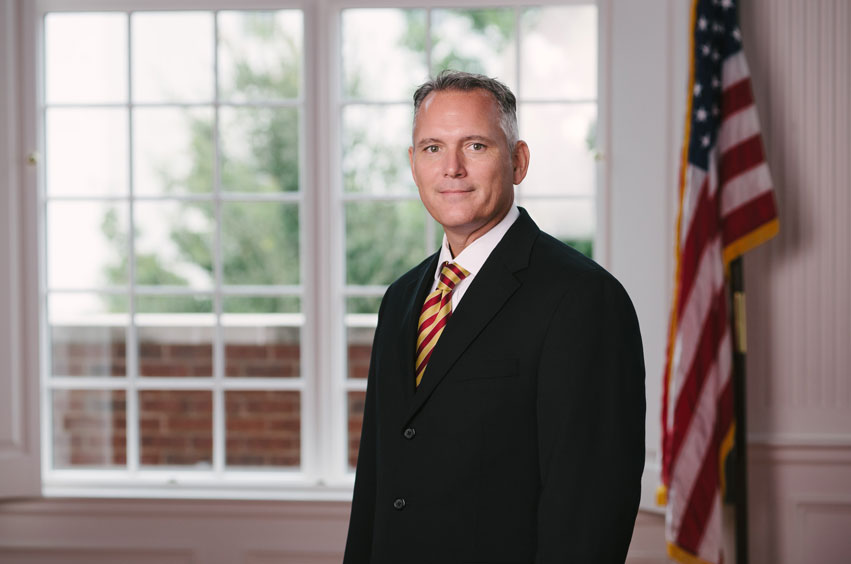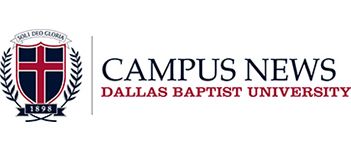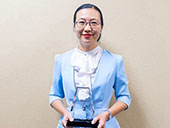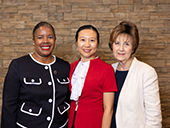Associate Provost Dr. Mark Hale Reflects on Navigating DBU through the Pandemic
This article is over six months old and may reference former titles for DBU faculty or staff, discontinued programs, or other details that have since changed. If you have any questions, please contact us at news@dbu.edu, or (214) 333-5172.

In the interest of full disclosure, towards the beginning of Spring Break when talk of a delayed start and even a move online began circulating, I was a skeptic. I had no idea the impact COVID-19 would have on DBU, our state, our country, and beyond. Within a few short weeks, we would find ourselves scrambling to move our class content online, maintain communication with our students, learn new ways to operate and disseminate information, take care of administrative tasks, address family needs, and navigate the overwhelming prospect that this pandemic may be with us for the foreseeable future.
If there was one overarching constant in the early stages of the pandemic, it was the ever-evolving and relentless change that occurred by the hour. It was almost impossible to gather information, form a plan of attack, and disseminate that plan before circumstances changed, and the plan had to be reformulated. It made it difficult to make decisions about where we would be in a few days, much less in a week or a month down the road. In the early stages, I never envisioned the type of response that would be necessary to ensure we could continue to address the mission and vision of the institution to provide a quality, Christ-centered education for our students for the remainder of the Spring semester and possibly beyond.
One of the first realizations was that we would need to utilize the resources we already had in place to facilitate a move online. The Lord had already prepared a way for us to continue. Years ago, Dr. Gary Cook had developed a course continuity plan than provided an online Blackboard shell in every course offered at DBU. This was not a new initiative or something we had to activate because of COVID-19. This forward-thinking plan had been in place for decades for such a time as this. Additionally, every class at DBU, whether taught in a traditional format in the classroom or not, was required to teach one online session of their course in the first few weeks of the semester to make sure both students and faculty could easily transition online if the need arose because of a campus crisis. This had been taking place for years, so when the decision was made to move classes online, the infrastructure and ability was already there in the Blackboard platform and in our faculty, staff, and students to make the transition a smooth one.
To help balance the many calls for support from faculty who were less familiar with online learning we needed to identify faculty who felt comfortable integrating technology with their pedagogy. I worked with the academic deans to identity full-time and adjunct faculty who were already using technology in their classes and enlisted them as a member of the Peer Faculty Online Support Team. This team helped alleviate some of the burden on the online helpdesk and Information Technology staff who were fielding an influx in online related questions. They were instrumental in helping move everyone online and provide immediate help when needed. The IT team also provided training sessions in the weeks prior to the move online to help bolster faculty support and address any immediate issues that were needed for class continuity in this new format.
The President in consort with the COVID-19 taskforce and the Provost developed two faculty committees to contribute to the planning process for the fall. The first committee was established to address a possible return to campus scenarios. More than a dozen options had been identified and the committee worked to narrow the choices to four viable options. The second committee worked to develop classroom protocols and practices for a possible student return. These faculty committees included representatives from across the campus community who provided valuable feedback about the specific needs and parameters to ensure the best possible outcomes for the faculty, staff, and students.
Information Technology secured funding for upgraded audio and video capabilities for classrooms across campus. This new technology was essential in creating an environment where students and faculty could connect more seamlessly. The investment, while unplanned, created an opportunity for future flexibility and access for some who might otherwise not be able to attend classes.
On August 17, full-time faculty gathered in a face-to-face session in a socially distanced Pilgrim Chapel to hear from the President and begin to prepare for the new semester. Some joined online and all were anxious to get started with the new semester. We implemented online and face-to-face breakout sessions over the next few days to ensure that everyone was prepared and ready to begin teaching in the fall. Faculty divided classes that would be offered via a flex mode to maintain social distancing, as final classroom assignments were made.
Classes began on August 24. While we have experienced some small start-up issues, most classes have adjusted to the new teaching dynamic very well. Students and faculty have developed a rhythm and routine in each class and are beginning to assimilate the use of technology more easily. This was truly a group effort. The Lord guided the whole undertaking as each day presented new issues and concerns. As we faced adversity and unforeseen issues, we were able to turn to those team members who were gifted and talented in specific areas and pull the people, planning, and purpose together to successfully navigate this COVID-19 experience. The right people were at the table and the leadership provided a path forward that was bathed in prayer and sought to glorify God through these efforts.
Dr. Mark Hale is Associate Provost for Faculty Development at Dallas Baptist University.








